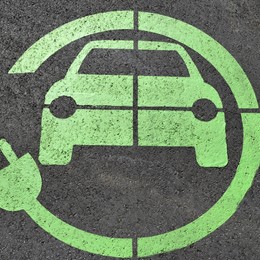Specialist Corporate and Commercial Lawyers
With an anticipated 1.7 million electric cars being on the road in Australia by 2030, an electric car charging system is going to become a standard service inclusion in the family home. The Federal Government is expected to boost its investment in charging infrastructure to help manage the transition towards an electrified national fleet, however, homeowners may need to consider installing their own infrastructure sooner rather than later.
Many new buildings are being made electric vehicle (EV) ready to avoid expensive retrofitting down the track. For existing homeowners, particularly those in strata buildings, it will only be a matter of time before EV charging ports will need to be installed. Obviously, this a more complicated process when dealing with the installation of these systems in the common property of a strata scheme.
In short yes. Consideration needs to be given not only to the current demand, which may only entail one or two electric vehicles, but through to 10-15 years’ time where 100% of vehicles in a strata scheme may be electric. The key for owners in a strata building is to not allow owners to ‘do their own thing’. Allowing owners to take matters into their own hands may result in EV chargers being randomly fitted onsite that may end up being incompatible with other essential common building infrastructure.
Often, in a strata scheme, you will see an EV charger installed in a ‘shared’ space such as a visitor car park. This is often just an interim measure.
Specialist EV infrastructure companies are best placed to advise on the type of infrastructure to be designed and installed to ensure efficient, safe and equitable access to the facilities. There are shared EV energy management systems that require login details to release the charge and allocate the cost to that relevant strata unit.
In the absence of any specific by-laws, it may be permissible for the residents in a strata scheme to use existing general power outlets to charge their vehicles, which could result in the strata paying for the (common property) electricity.
Ideally, any by-laws need to be drafted with consideration to the specific circumstances of your strata scheme. An electrical assessment may need to be undertaken to understand your situation. As the requirement for EV charging is relatively new, it is important that you have a qualified solicitor draft these by-laws for you, to ensure that the use of EV charging stations is fair and safe. Establishing by-laws now sets the ground rules for all future requests and can avoid expensive misunderstandings.
Wattblock, a company specializing in energy solutions for strata committees, strata managers and local councils, has created a “decision tree” to assist strata committees in considering whether it is appropriate to start allowing for EV charging in their strata scheme. The decision tree can be located on page 68 of the Wattblock Research Report on Electric Vehicle Recharging in Residential Strata Buildings, accessible at https://www.wattblock.com/uploads/4/4/9/8/44984189/city_of_sydney_electric_vehicle_recharging_in_apartment_buildings_report_26-07-18.pdf.
Even if your strata scheme is not ready to consider installing EV charging ports, an allowance for the cost of such installation should be worked into the capital works budget over the next 10 plus years to avoid a costly special levy being raised. Installation of EV charging ports is unlikely something the strata scheme can avoid forever.
If your strata scheme requires any advice on by-laws for EV charging, or any other strata related issues, please contact our experienced property team.
This article was co-written by Koreen Partridge, Senior Associate.
